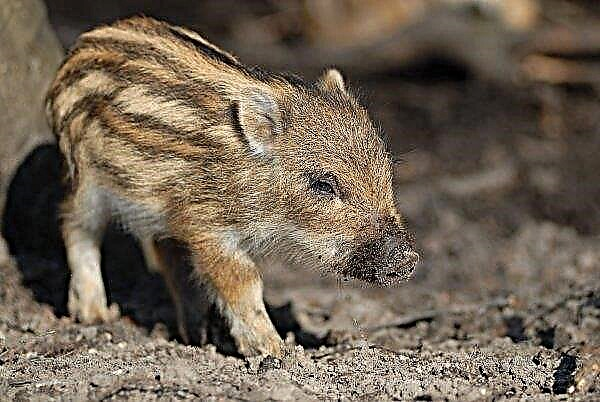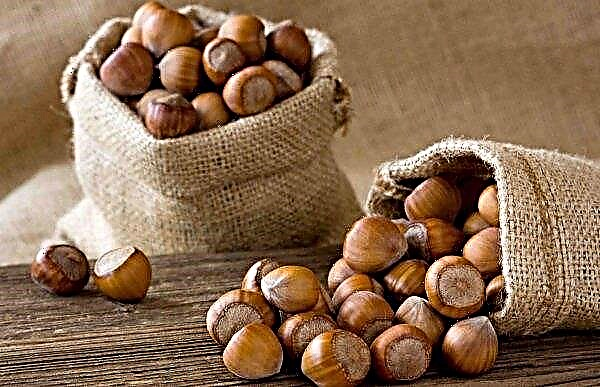The Korean fir of Molly variety is famous for the decorative appearance of fruits and needles, therefore it is often used for planting in parks and in household plots. A description of the botanical features of the variety, as well as its application in landscape design, is described further in the article.
Botanical Description
The Molly variety is a species of Korean fir and is a representative of the Pine family. It is characterized as an evergreen, dwarf tree, reaching a maximum height of 3-4 m. The crown has a conical shape, its diameter can be up to 3 m. The variety in question lives up to 300 years. Its growth averages 7 cm per year, so Molly is a slow-growing variety.
Cones ripening begins in the first year of growth, but their more abundant appearance should be expected only after 8 years. Young fruits have a purple color with a blue tint, mature ones acquire a dark brown color. They grow upward, their length reaches 6 cm, and their width is 2 cm. The needles are dense, not prickly, up to 2 cm long. Its color is bright green, glossy at the top and silver at the bottom.
Important! The Molly variety is prone to freezing of young shoots, so in the first years of development it needs shelter for a period of cold weather.
Landing
Molly Korean fir grows well and develops in light or semi-shaded areas. The soil for growing this plant should be well permeable, light and fertile.

Fir seedlings can be planted in the ground in spring in mid-April or in the fall 4 weeks before frosts. Landing pit is prepared a month before disembarkation. Dig a hole 50 cm deep and 60 cm wide. The upper fertile soil layer is mixed with 10 kg of peat, 10 kg of sand and 5 kg of rotted manure. This mixture is added to the well to the middle. After 30 days, they begin to plant a seedling in this hole.
Step-by-step landing instructions:
- Loosen the soil in the pit.
- Introduce the seedling into the hole and carefully spread the root system along the earthen mound.
- Make sure that the basal neck is 3 cm above the level of the pit.
- Fill the holes to the top of the hole with earth and press tightly.
- Pour a seedling of 10 liters of water.
- Mulch the soil with peat.

Fir Care
Taking care of a fir tree is not difficult. This variety requires the following care procedures:
- watering;
- fertilizer 2 times a year;
- sanitary pruning;
- mulching and loosening of the soil;
- watering.
Did you know? Fir releases phytoncides into the air, which disinfect oxygen from bacteria and viruses.
Subject to all recommendations for the care of fir, the tree will grow healthy and all year round will delight the eye with a beautiful appearance.
Watering
Young firs need to be moistened more thoroughly. They are watered every 15-20 days for 5-10 liters for each plant. Mature trees do not need abundant irrigation, so it is produced 1-2 times a month. Each plant is watered with 10 liters of water.

Top dressing
Fertilizers for fir begin to be applied on the 3rd year of growth, because when planting enough nutrients were introduced into the soil.
Top dressing is performed 2 times a year:
- The first fertilizer is carried out in the spring with the onset of the thaw. Under each tree make 150 g of "Kemira". Fertilizer is scattered in the near-stem circle, and then the plant is watered with 10 liters of water.
- At the beginning of summer, a second top dressing is made. For digging over 1 m², 30 g of nitroammophoski is scattered.

Loosening and mulching
After each moistening of the soil, loosening to a depth of about 10-15 cm is required. This procedure is designed to supply the rhizome with oxygen and help to avoid the formation of mold. In late spring, you can carry out the mulching procedure. Sawdust, straw or peat are used as material for mulch.
Did you know? Due to the fact that in the wild the branches of the spruce begin to grow from the soil itself, there is practically no undergrowth in such forests.
This process will retain the necessary moisture and save the gardener from unnecessary work to remove weed grass. In autumn, the mulching procedure is carried out not only with the aim of maintaining moisture for a long period. But also in order to maintain heat in the root system and provide a more comfortable wintering for the tree.
Pruning
This type of fir does not require forming pruning, because its crown by nature has a beautiful conical shape. Every year, sanitary removal of shoots that have withered, dried up or were damaged by insects is carried out.
Important! After the procedure for removing shoots, the places of cuts should be covered with garden varnish. This process will help to heal damaged areas faster and prevent infection.
To make the crown more magnificent, you need to slightly cut the shoots growing in the center. Trimming shoots is necessary only with sharpened tools that have been previously disinfected.

Possible diseases and pests
The Molly variety is resistant to many diseases and pests. But due to the influence of external factors, such as weather conditions and improper care, aphids can be invaded. She sucks all the juices from the branches and needles, which leads to a slowdown in plant growth and provokes wilting of shoots.
Fighting aphids:
- Manual removal of damaged branches and their burning.
- Treatment with a soap solution made from: 150 g of liquid soap and 10 l of warm water.
- Spraying with Fitoverm 2 ml per 1 liter of water.

Due to poor soil drainage, the plant can become ill with late blight. The disease develops rapidly in humid, warm conditions. Fungal infection provokes rotting of the root system, which can be seen only after the disease reaches the root of the neck. As the disease progresses, the top of the tree gradually changes color to gray and fades.
Blight control:
- Timely sanitary pruning of fading parts of fir.
- Loosening the soil after rain and watering.
- Irrigation means "Aliet" 0.5% in the amount of 1 liter per plant.

Breeding
You can propagate fir:
- by seeds;
- cuttings.
In order to grow a tree from seeds, it is necessary to collect planting material in the autumn and carry out the process of its stratification. All seeds are placed in a plastic bag with wet sand or sawdust. It is kept in a dark room at a temperature of 0 ° C to + 4 ° C for 30 days.
Next, the seeds are planted in containers with a moist substrate of sand and peat, taken in a ratio of 1: 1, and kept at a temperature of + 4 ° C for 2 months. After this period, the pots with crops are moved to warmer conditions and kept at a temperature of + 18 ° C until the first shoots appear.
For propagation by cuttings in spring or summer, young shoots up to 15 cm long are cut. From the bottom, they are cleaned of needles and inserted into previously prepared containers with sand and peat mixed in equal proportions.
For 60–90 days, the cuttings are kept in humid conditions at a temperature of + 20 ° C. By the autumn period, planting material will be ready for transplantation into open ground. If, due to a sharp cooling, it is not possible to plant the cuttings in a new place, then they are kept in the same conditions until spring.
The use of wood in landscape design
Molly fir is often used in landscaping. This plant looks great in single plantings, like decor in a stone garden or near a fountain. It is also planted in composition with deciduous trees and flower bushes.
The Korean fir Molly variety is excellent for cultivation with the aim of ennoblement of park areas and a site near the house. Gardeners choose this plant not only for the decorative features of needles and fruits, but also for their unpretentiousness in care.












